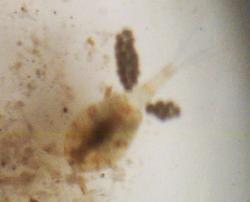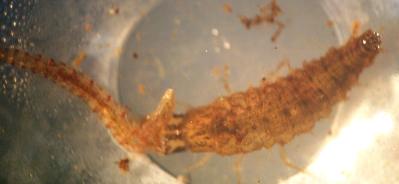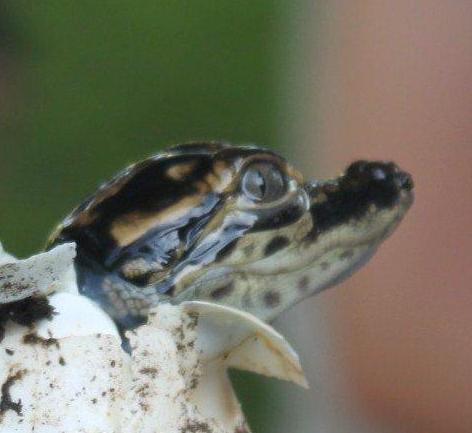|
The purpose of the pond life program at Brazos Bend State Park is to
acquaint park guests with the very diverse and interesting world
of aquatic invertebrates which exists beneath the surface of all
of the bodies of water at the park. This world is largely unknown
or ignored by most visitors to the park. They all know that there
are alligators, fish, turtles, and frogs in the water, but few
have ever taken note of the water beetles that they see swimming
about on top of the water. Even fewer are aware of the
mini-monsters that crawl about in the muck at the bottom of the
pond. And those who have looked through microscopes to see
incredible creatures like copepods and water fleas are even rarer.
|
|

Copepod. 1.5 mm long
|
|

Water Scavenger Beetle Larva, 4 mm long attacking midge larva.
|
|
Here, in this hidden world, tiny creatures must cope with problems of
survival and reproduction. Little worms, no thicker than a human
hair, build camouflaged houses out of bits of decaying plant
material, and drag them everywhere they go. Mothers must find safe
places to hide their eggs and babies must make their way alone in
a very hostile world. Tiny predators, less than 5 millimeters
long, but fiercer than any tiger, stalk and attack their prey in
the duckweed jungle
|




